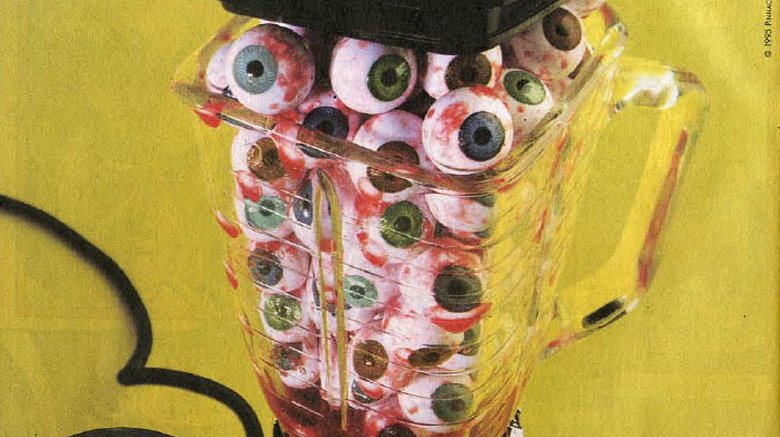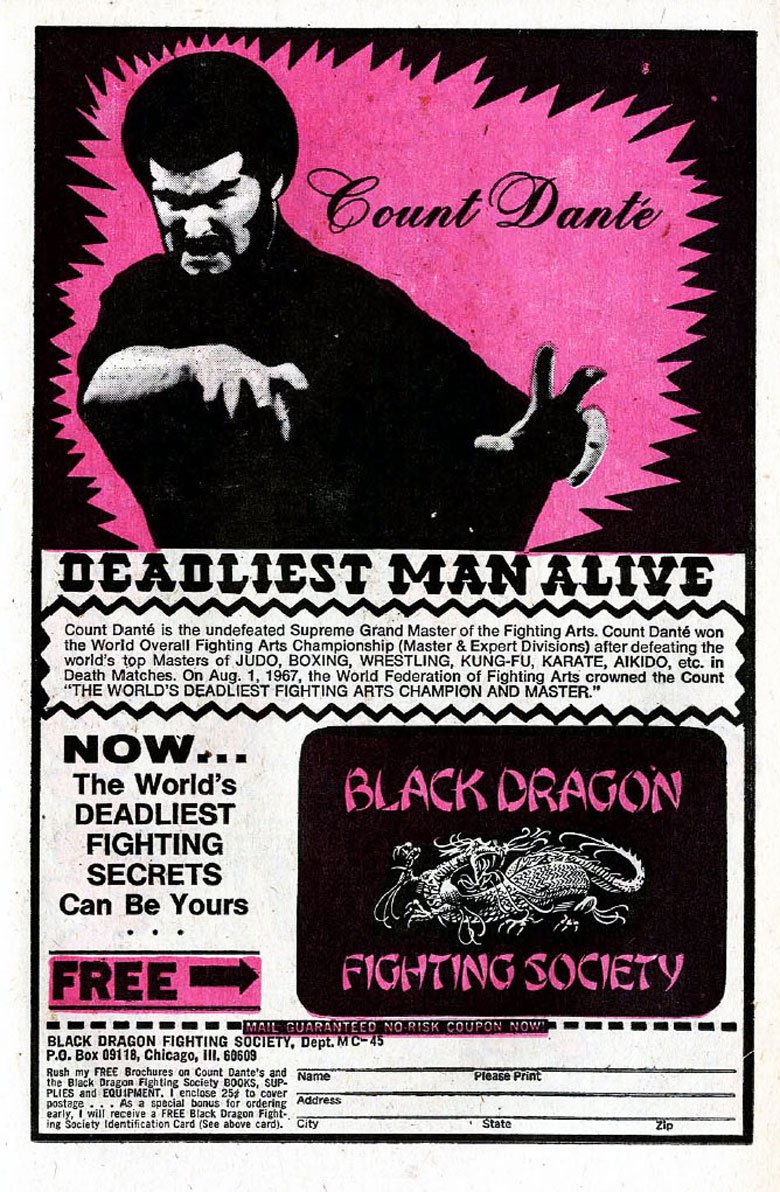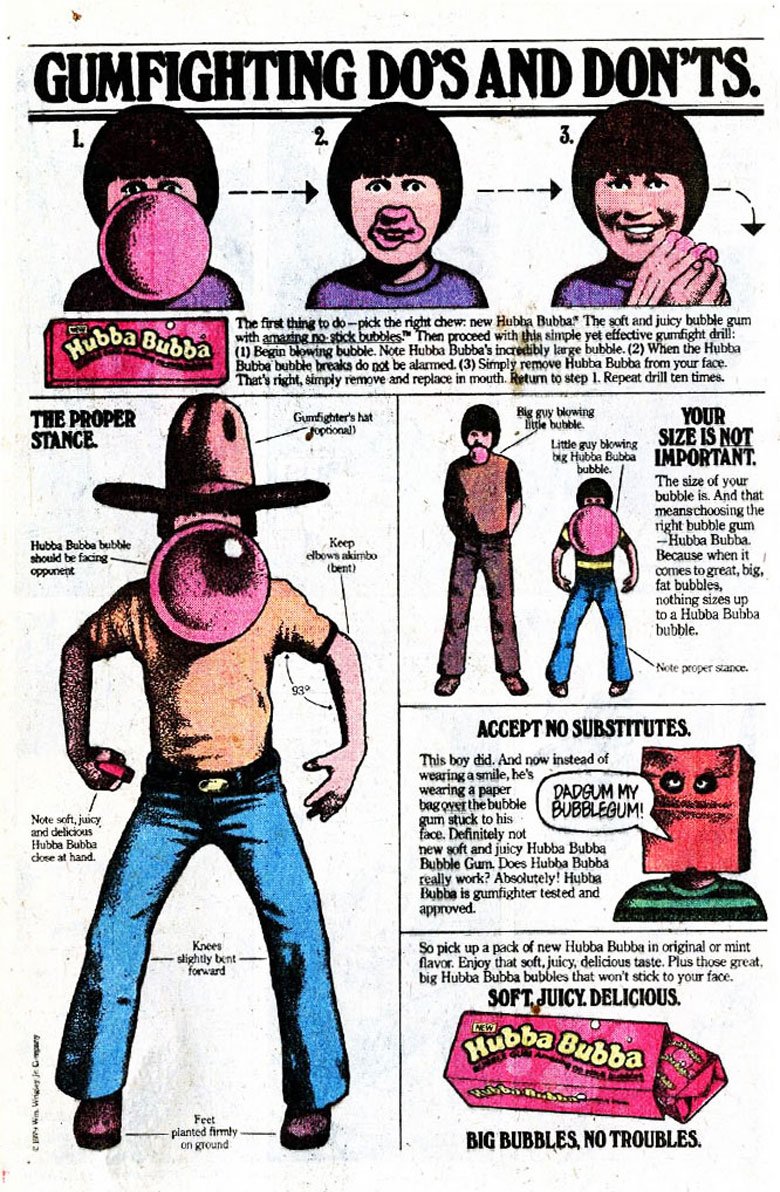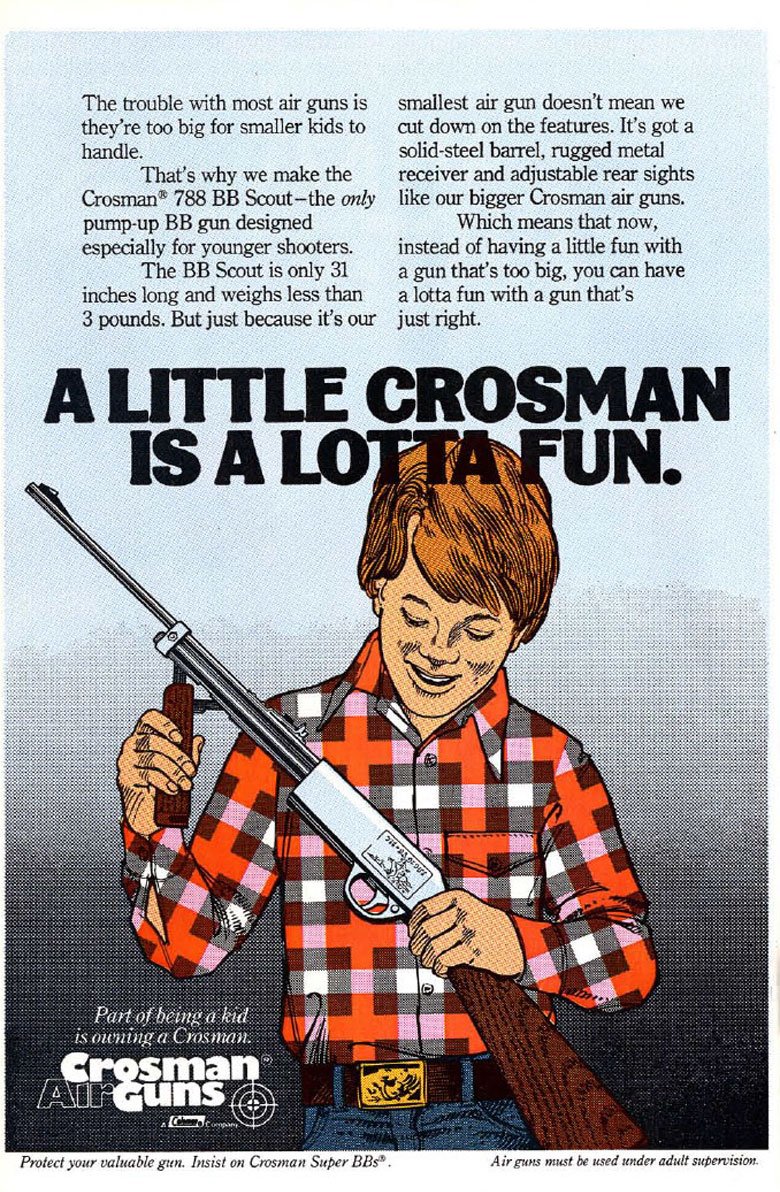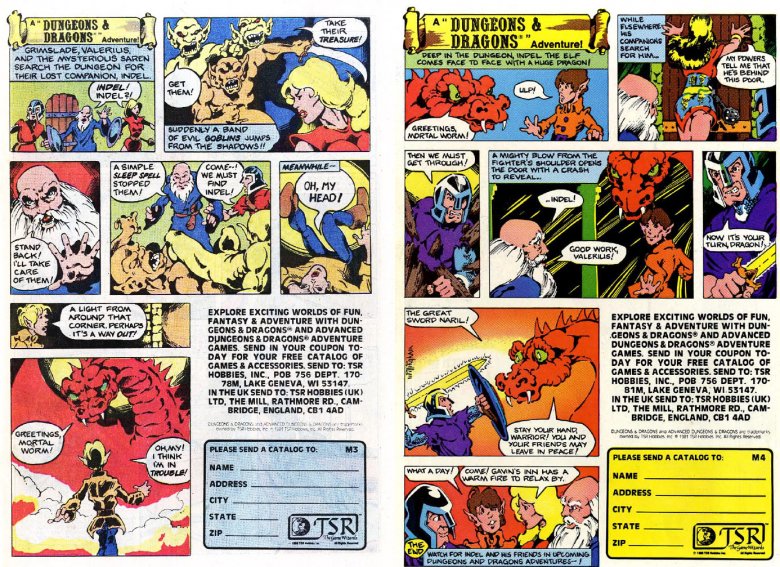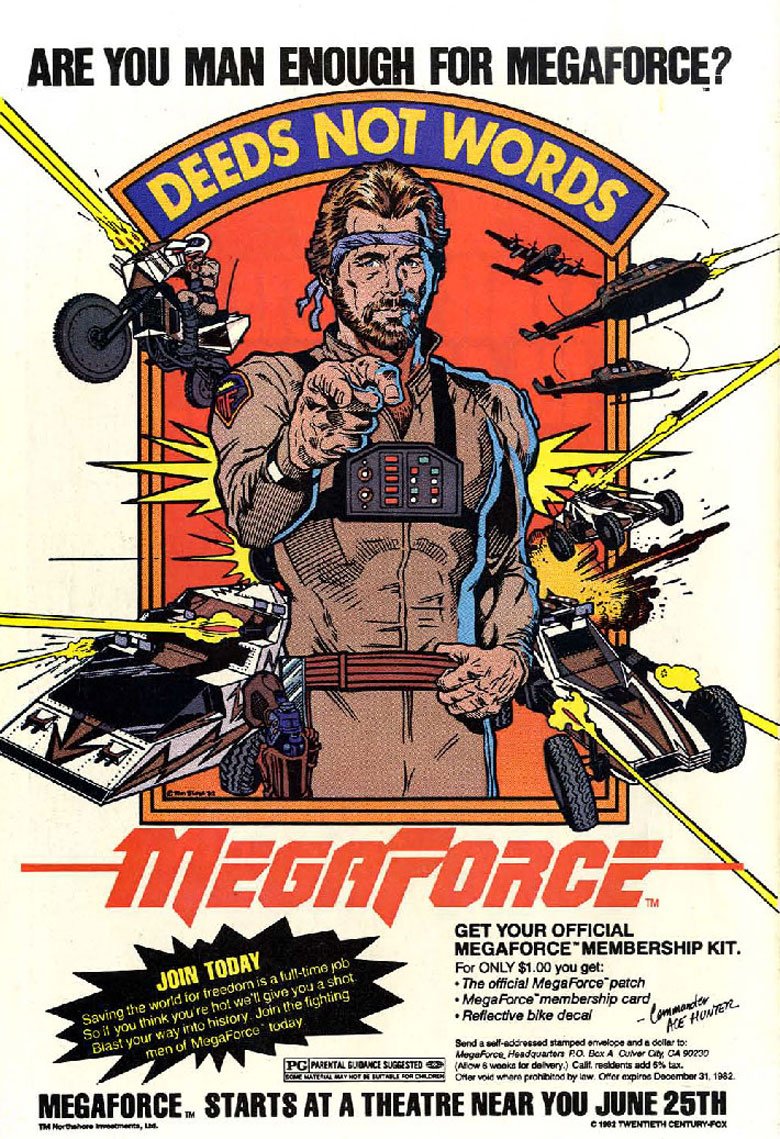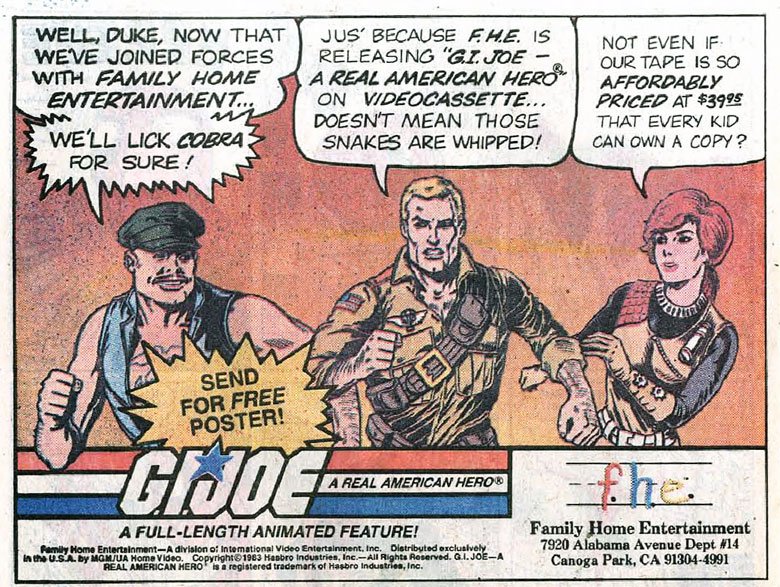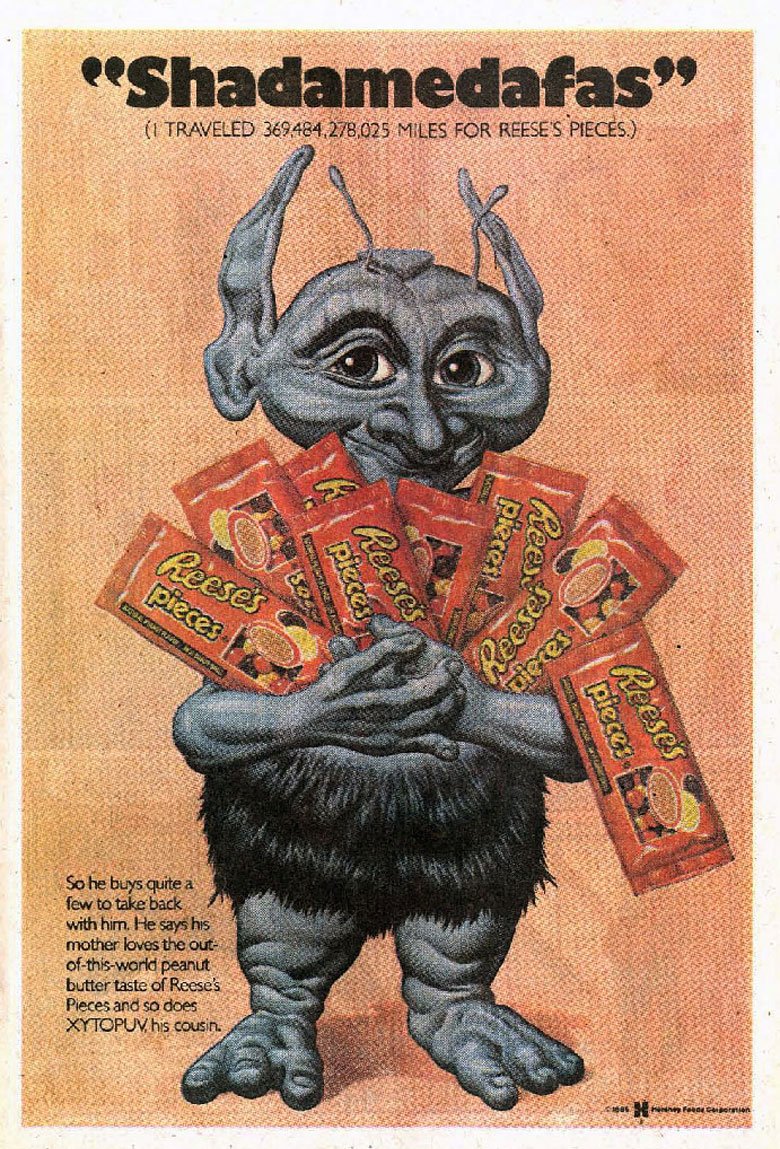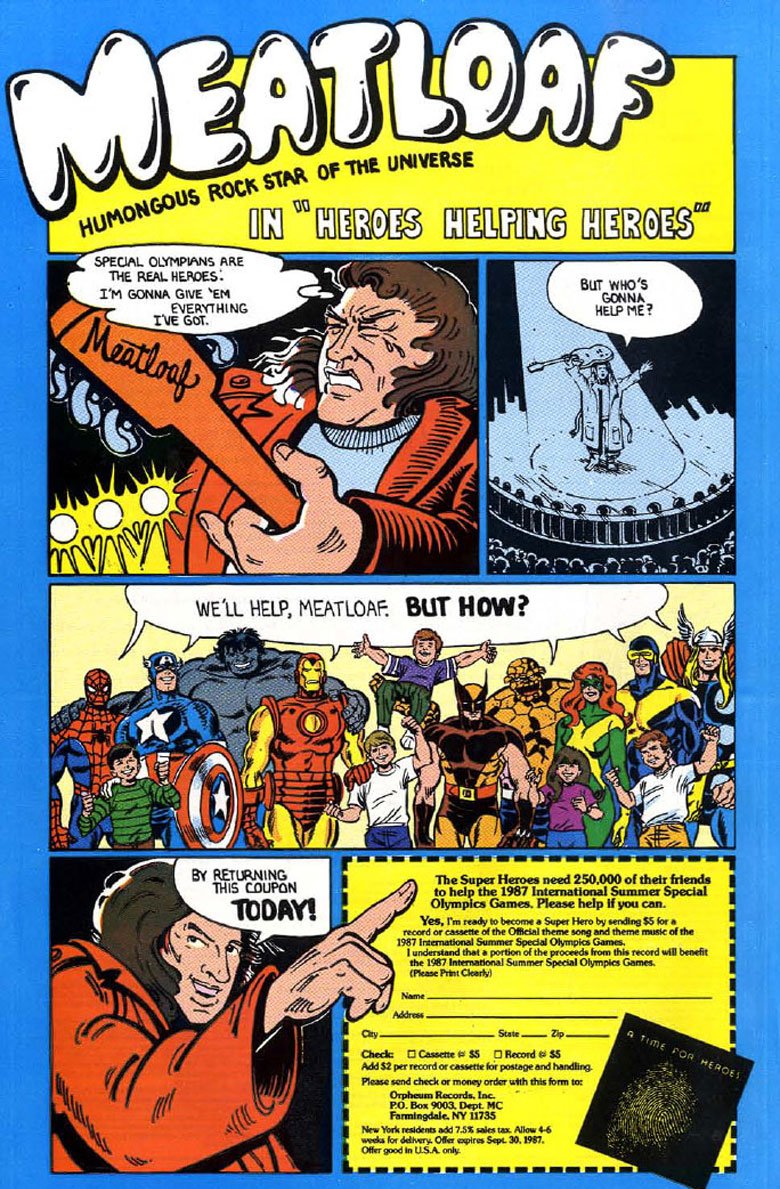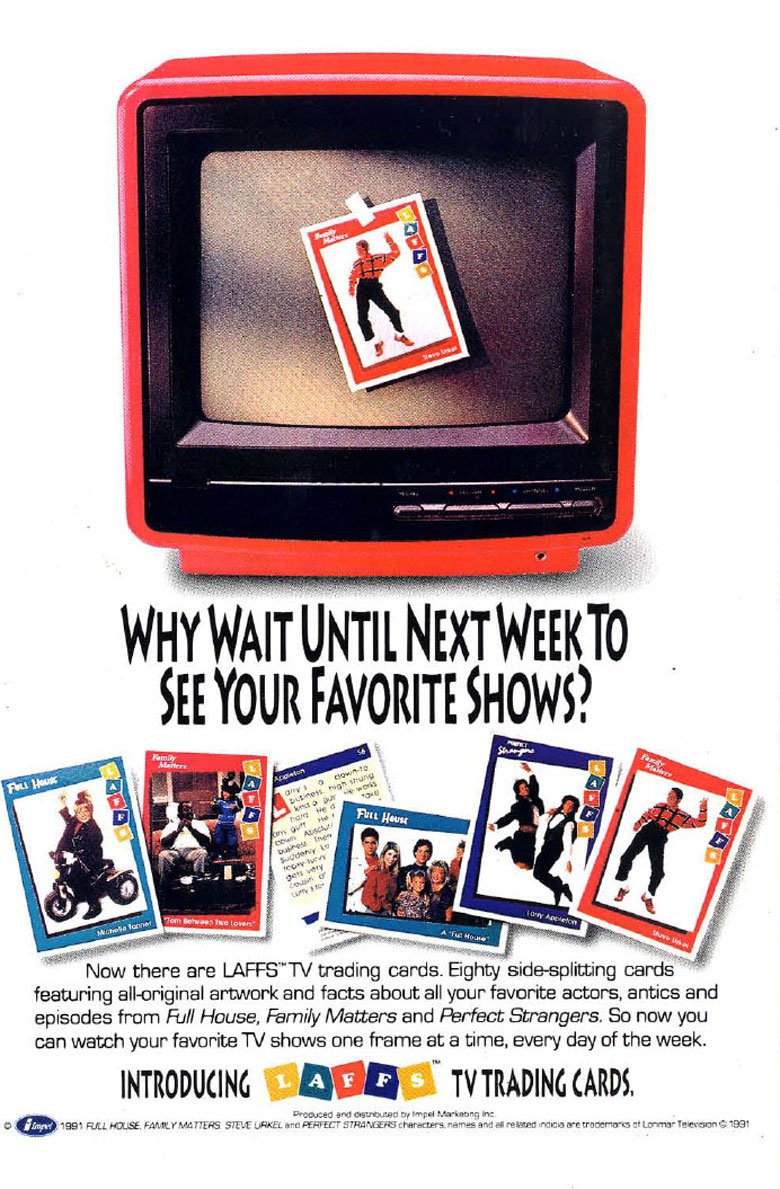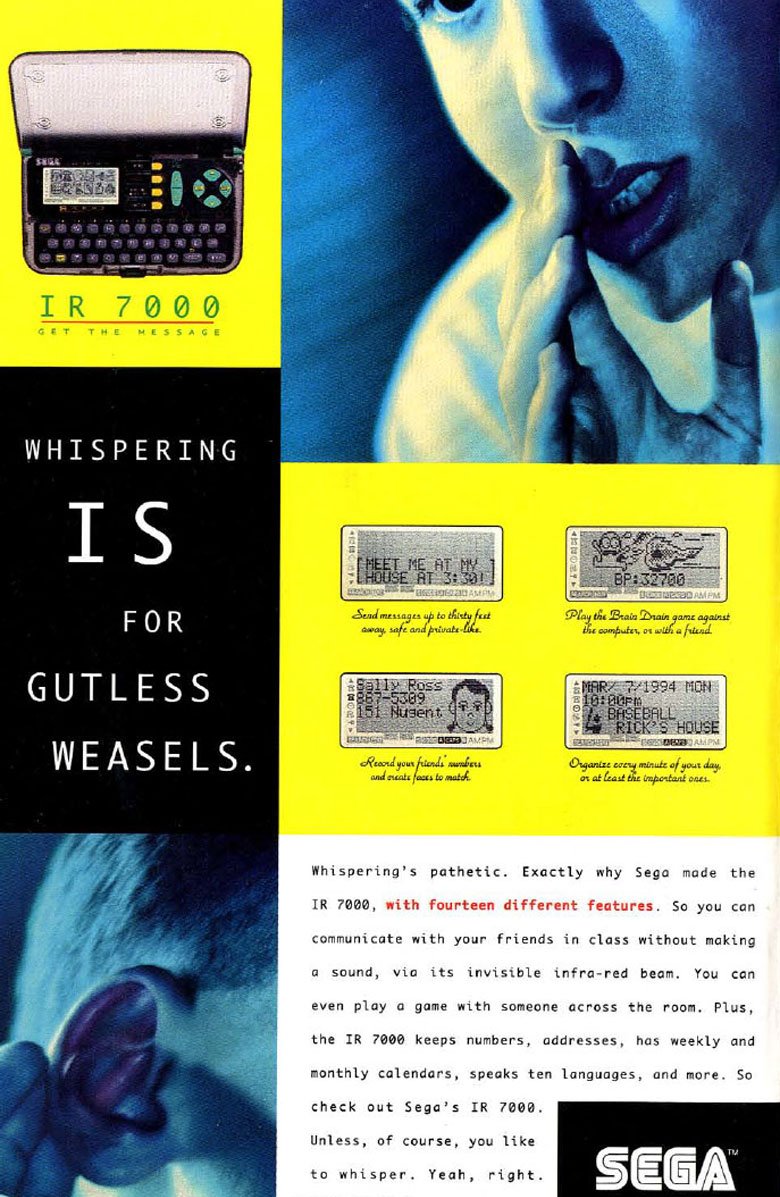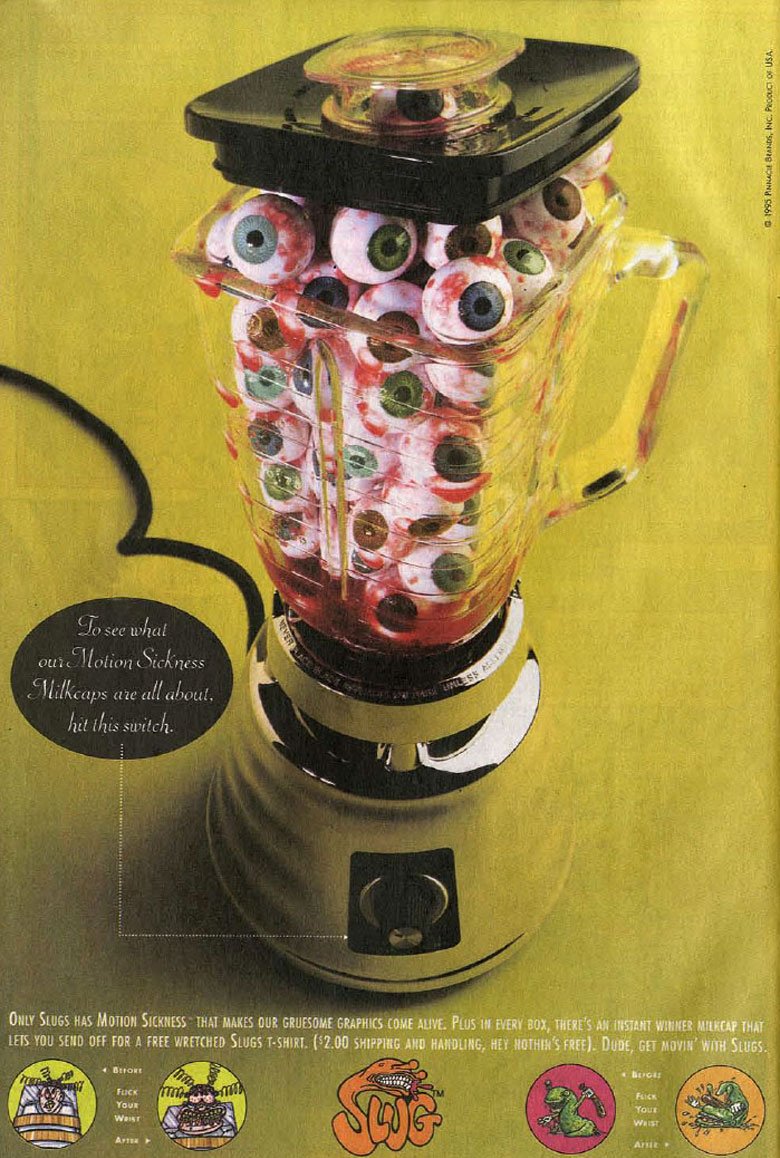The Most Bizarre Ads Found In Comics
Here's the thing about advertising in comics: the entire idea behind a print ad, the one thing that makes it effective, is that it has to be able to catch a reader's eye long enough for them to stop flipping pages and actually pay attention while someone tries to sell you something. With comics, that's a pretty daunting task. Comics are, after all, presenting readers with the most exciting stories the creators can imagine, full of people who can throw cars punching each other hard enough to save the entire world. Compared to that, a new flavor of bubble gum isn't exactly that thrilling.
And yet, the marketing wizards who stocked the pages of your favorite comics have done their best, and the results are very, very weird. How weird? Read on to find out, as we dive back into forty years worth of comics to find out, and run into "gumfighting," overpriced VHS tapes, bootleg aliens, and Meat Loaf along the way.
Count Dante and the Black Dragon Fighting Society, 1975
The martial arts boom of the '70s resulted in some pretty amazing ads, including one that promised to send you a record that would subliminally "program your mind" to know karate and also give you a "steel-like gaze" that would intimidate even the strongest of men. The most infamous by far, however, has to be the one featuring Count Dante and the Black Dragon Fighting Society, and the only thing more amazing than the ad itself is its real-world backstory.
Count Juan Rafael Dante was born John Keehan, before deciding that he was secretly descended from Spanish royalty in exile, something that may or may not have been inspired by Edmond Dantès, the protagonist of The Count of Monte Cristo. He was a fixture of the burgeoning martial arts scene of the era, with what most agreed were some legitimate skills bolstered by what could charitably be called insanely bold claims.
The most famous, and the one designed to grab attention in the comics under a beautifully intense photo of the man himself, was that he had killed over a hundred men in mysterious death matches using techniques like the Dance of Death and the Dim Mak death touch. Needless to say, no proof of those victories ever existed, but there definitely were records of the time he tried to blow up a rival dojo in Chicago by duct-taping a stick of dynamite to it. We can assume that particular technique didn't make it into any of his books, but you'd have to gamble a stamp to find out for sure.
Hubba Bubba "Gumfighting," 1979
There's nothing wrong with an advertiser trying to hop on a trend, but attempting to create one out of nothing is a completely different matter. Case in point: "gumfighting," the subject of a couple of ads from the late '70s that made a pretty strong attempt to convince children to settle their conflicts by squaring up, facing off, and seeing who could blow the biggest bubble with a mouthful of chewing gum. There's even an ad that purports that this is a tradition that dates back to the early 19th century, and honestly? That seems like going to an awful lot of trouble to get kids to blow bubbles, something they were probably going to be doing anyway.
The weirdest part, though, is the way the ad's presented as though the reader was going to know exactly what they meant by "gumfighting," like it was a thing that we all agreed was happening and not just the fever dream of an ad copywriter who fell asleep watching High Plains Drifter after downing three fingers of NyQuil. It's not difficult to imagine the shifty eyes and flop sweat of someone trying to pitch this to a boss like it's the hottest thing among today's youth, as though the kids of 1980 were super into cowboys, but not their guns.
Actually, strike that. The weirdest part is that the main point of all these ads wasn't that you could blow a bigger bubble with Hubba Bubba, but that it was easy to get off your skin after that bubble popped. If the nicest thing you can say about your product is "it won't stick to your face when you're trying to win an argument," then perhaps you have already lost that particular gum fight.
Crossman BB Scout, 1980
Speaking of the thing kids really love about cowboys, let's take a moment to talk about how comics used to sell guns to children all the time. Okay, fine, they were just BB guns, but still.
These things date as far back as the '50s, and each one is written with copy so somber and loving about the very idea of a child's quiet joy at receiving his very first rifle that you can almost hear the soft moans of the NRA members out there as they read them. They're just a little over the top, is what we're getting at here.
And this one is by far a favorite, because it addresses the amazing problem of many children just plain being too small to enjoy a full-sized gun. The solution—because there's certainly no way we're just going to not give guns to tiny children, that would be crazy—is simple: a child-sized gun, just perfect for the Western-shirted pre-teen in your life this Christmas. And don't worry. Just because it's small, that doesn't mean you won't shoot your eye out.
Dungeons & Dragons Adventures, 1982
It won't come as much of a surprise to learn that comic books and Dungeons & Dragons have gone hand-in-hand for as long as D&D has existed, but by and large, the ads have been surprisingly unimaginative for a game that's entirely about imagination. They're mostly just pictures of the books and slightly-too-serious invitations to learn even more new, exciting rules—and who doesn't love rules!
In 1982, however, they hit on something really interesting: a year-long ad campaign that ran as a series of single-page comic strips, featuring a consistent cast of characters on a long-running adventure, where each strip ended on a cliffhanger. In other words, they did a comic book version of the content of a D&D game, and depending on which comics you were reading, it might've been better than the story you paid money for. Sure, it might've been a better idea to have the knight actually use the badass magic sword to fight the dragon rather than just waving it at him until the dragon got scared, but whatever. When you've only got seven panels, you do what you can.
Sadly, Indel, Valerius, and their pals never made it into more adventures after '82 came to a close, but there was one member of the party who found fame and fortune: Artist Bill Willingham, who would go on to a long career in comics that included writing and co-creating DC's Fables.
MegaForce, 1982
If you're not familiar with MegaForce, it's a 1982 action movie based around the very simple premise of "what if GI Joe was just... just really stupid." It's full of rocket-powered motorcycles and high-tech tanks, and stars Barry Bostwick as Commander Ace Hunter, the leader of an international peace-keeping strike team who assured viewers that "the good guys always win... even in the '80s." Oh, and the whole thing was directed by Hal Needham, the former stuntman best known for the Cannonball Run and Smokey and the Bandit movies. It's great.
Unfortunately, it also tanked pretty hard at the box office, and didn't even get a DVD release until 2012, meaning that it was mostly remembered for this particular ad. Not only were young readers promised a reflective bike decal that would look great on a rocket motorcycle and a patch that we would personally pay good money for, we also got a pretty interesting attempt to sell it to a non-cinematic audience.
Instead of using the movie's poster, the ad that ran in the comics featured a comic-style pencil and ink Ace Hunter and his headband reminding readers "deeds not words." Astonishingly, having one's masculinity challenged by a drawing of Barry Bostwick somehow didn't translate directly to Hollywood success.
G.I. Joe Home Video, 1985
If younger readers out there ever wonder why video rental stores were such a big thing back in the '80s and '90s, consider this ad, where America's daring, highly trained special missions force attempts to assure impressionable children that $40 is a reasonable price for five episodes of G.I. Joe on VHS.
Forty. Dollars. That's as many as four tens, and that's terrible.
And that's 40 bucks in 1985 money, too—in today's money, that's $93. The fact that you think everyone can afford that is exactly the attitude that drives people to signing up with Cobra Commander, Scarlett.
Reese's Pieces, 1985
In 1985, E.T. was the highest grossing film of all time, a record it would hold until Jurassic Park would finally stomp past it in 1993. Having only been released a few years earlier, it was still pretty fresh in the public consciousness, even getting a hugely profitable re-release in 1985. If you've seen the movie, you might remember that Reese's Pieces play a pretty big part in the plot, a bit of product placement that caused sales to spike by 65 percent the first time around just by virtue of a weirdly endearing alien thinking they were a pretty tasty snack.
So when that 1985 re-release came around, it makes a lot of sense that the folks over at Reese's would want to take advantage and remind people of just how much their beloved alien pals loved their candy. The thing is, rather than just, you know, doing an ad with E.T. in it, like you might expect from someone who understood how marketing tie-ins were supposed to work, Reese's decided to go broken arrow with a set of ads featuring completely unrelated aliens.
Divorced from their original context, they seem pretty weird to begin with, this series of big-eyed weirdos with nonsense quotes about how much they like candy. When you remember that it's all supposed to be jumping off one of the most successful movies of all time, though? These could not possibly seem more hilariously bootleg.
Meat Loaf in: "Heroes Helping Heroes," 1987
The one nice thing you can say about this ad—the only nice thing, in fact—is that its heart is in the right place, raising money for the Special Olympics. Unfortunately, there's also literally every other thing about the ad.
Before we even get into the first panel, things have gone completely off the rails with the reference to Meat Loaf as "Humongous Rock Star of the Universe," which feels like a crack about his weight that someone made out of a magnetic poetry set. Then there's the fact that the Humongous Rock Star of the Universe is drawn with two completely different faces over the course of four panels, neither of which actually look like Meat Loaf—not to mention the fact that he's mysteriously dressed like Sam Kinison.
The worst though, is that guitar in the first panel. No one holds a guitar like that! It's impossible! Meat Loaf doesn't even play guitar!
Laffs Sitcom Trading Cards, 1991
Forget about $40 G.I. Joe tapes, if you really want to understand the endless hellscape that was life before streaming video, look no further than the existence of Laffs, a set of trading cards based on the hottest sitcoms of the early '90s. Or three of them, at least, because Family Matters, Perfect Strangers, and Full House were the only ones they bothered to get the rights to.
In fairness to the folks at Impel, the early '90s collector boom hit trading cards as much as it hit comics, so putting out a set that featured promo shots of Michelle Tanner and Cousin Balki probably seemed like a good idea at the time. What's a little harder to forgive, however, is the ad that tries to convince you that you should be spending the week between new episodes of Family Matters by taping a photo of Steve Urkel to your television and then, presumably, sitting in quiet reverence imagining Jaleel White's dulcet tones gently caressing your ears.
Maybe the weirdest part is the exhortation to "watch your favorite TV shows one frame at a time, every day of the week." The fact that the primary experience of an entire set of trading cards could be duplicated by ownership of a blank VHS tape probably explains why Laffs never made it to the 1992 season.
Sega IR 7000, 1994
By the mid-'90s, advertising in general had moved away from the idea of just telling you why a product was great, and straight into the much more radical, extreme tactic of straight-up insulting the reader. It happened everywhere, but in comics, it was pretty intense, as evidenced by an ad built around the idea that whispering—you know, just talking quietly—is the pathetic action of a gutless weasel.
It's worth noting that the product in question is one of those weird artifacts of the hazy, pre-smartphone days of yore: an electronic organizer. Seriously, that's all it is. Admittedly, it has both a calendar and an address book, and also features an infrared messaging program that probably takes at least ten times longer than just leaning over to someone and saying it quietly—assuming that they were also bullied into buying this thing by an extremely aggressive print ad, that is.
But hey, at least you won't be caught whispering! Or as we now know it here in our post-Sega IR 7000 world, the coward's speech.
Blender Full of Eyeballs, 1995
And now, a blender full of eyeballs.
We're going to be real with you for a second here: it took staring at this thing for about ten straight minutes—an extremely unpleasant ten minutes at that—to figure out just what exactly this thing was supposed to be an ad for. It turns out that this might just be the perfect representation of 1995, because it's actually an ad for pogs. Grossout pogs that are so disgusting that even seeing them is like ripping out your own eyeballs and dropping them into a food processor along with the eyes of several other people.
Again, and we cannot stress this enough, this was meant to sell something, and that something was neither eyeballs nor blenders.
